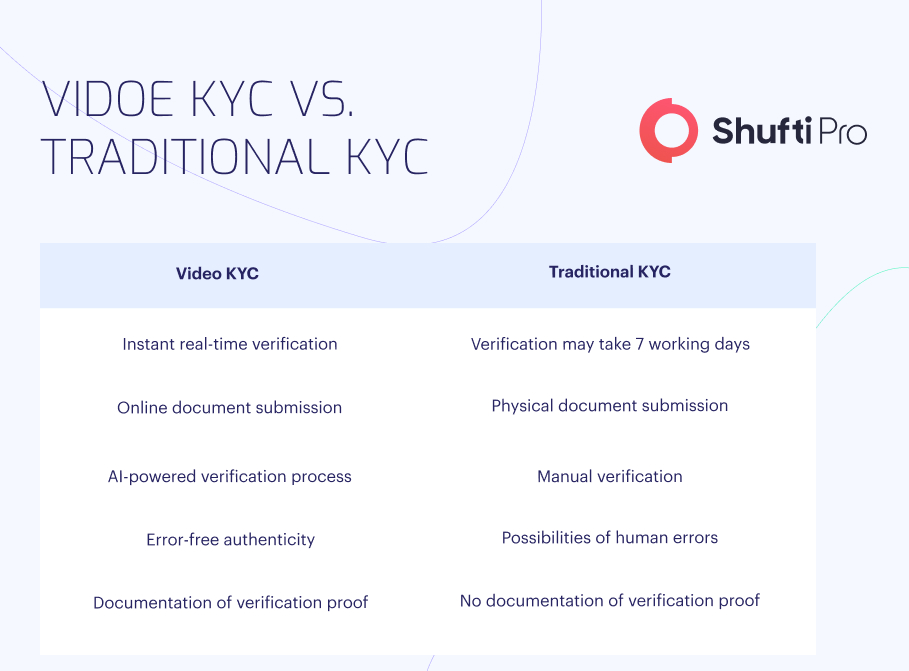The Evolution of Video KYC: Revolutionise the Fintech Industry

FinTech encompasses financial organisations’ use of computing and communications tools to bolster the safety of transactions. By providing accessible solutions, FinTech has revolutionised the financial sector and is only anticipated to grow in importance. Since its debut in 2016, the demand for FinTech has been high because of the numerous problems it remediated for countless banks and other financial institutions. The sector’s unprecedented growth is demonstrable after a mere year of takeoff, securing $9.4 billion by the end of 2016, and between 2016 and 2017, China’s Fintech industry grew by 55.2%.
Due to the need for protection in financial transactions and flows, the partnership between the financial sector and Fintechs is now a need. The global fintech industry is worth billions of dollars.
Fintechs perform digital identity verification to verify they follow Know Your Customer and Anti-Money Laundering rules. Biometric authentication and identity documents are two examples of the methods commonly employed for these verifications. These methods of establishing one’s identity come with their own set of problems. Therefore, many fintech firms have shifted their focus from manual ID checks to more efficient alternatives like video KYC.
Video KYC Regulatory Requirements
There is currently no law in the United States that mandates the use of video KYC by financial organisations. While many countries have different KYC laws, these are the places where video-based KYC is mandated or permitted. Several well-known cases in point are:
- European Union: Video verification, either face-to-face or remotely conducted, is required to issue a qualified electronic signature (QES) certificate.
- Garmany: Since 2015, when Germany’s financial regulatory agency (BaFin) mandated video KYC interviews for distant verifications, video KYC has been a part of the regulatory environment in Germany.
- Spain: The Spanish government’s anti-money-laundering agency, Sepblac, approved video KYC procedures at banking institutions 2018.
- India: Banks and other financial institutions in India are permitted to use video KYC by Section 18 of the Master Direction on KYC.
What Types Of Fraud Can Be Prevented By Using Video Kyc?
Spoof Attacks
Using video for Know Your Customer (KYC) checks, financial institutions may protect themselves from “spoof attacks,” in which criminals impersonate customers to get unauthorised access to accounts or other private data. Using video verification, banks may check that they are dealing with the actual customer.
According to a recent study conducted by Cyren, spoof assaults have surged 300% over the previous two years. This means more people fall victim to scam schemes perpetrated via online videos. Everyone, from customers to companies to internet service providers, must know the latest security measures to safeguard themselves against fraud threats.
Synthetic Identities
With KYC video, confirming a client’s identity is simple, eliminating the requirement for clients and banks to have any paperwork on file. Among the many advantages of this method is its high degree of accuracy, which has kept the attention of major financial institutions in Europe and Asia.
Deep Fakes
Due to the potential for money laundering and other criminal activity, deep fakes pose severe risks to banks and other financial institutions in today’s digital wallets and mobile payments world. Companies need to take action against deep fakes by doing things like creating online money transfer solutions and providing personnel with training to spot them. In the video, KYC clients are urged to safeguard their data by providing biometric identifiers like retina and face scans. Implementing video verification protocols is essential for online payment solutions so that clients can be guaranteed the legitimacy of any video material they view online.
Impact of Video KYC on Financial Institutions
Banks conduct Know Your Customer checks remotely using video conversations, with the help of video assistance software, to confirm key authentication facts. Before establishing a banking relationship, banks can evaluate the client’s risk profile through video KYC checks. Money laundering and other forms of digital theft are two of the main targets of video KYC.
Recent research indicates that by 2026, the global market share for Video KYC will reach $500 million, allowing banks to realise their full potential. The following is how it achieves this:
- Digital systems are ideally suited for this kind of remote onboarding. This approach has a low cost per unit. However, the price of video KYC should be considered before using digital onboarding.
- As video KYC necessitates a camera and an internet-connected device, businesses save money on expensive technology.
- Companies can save on transportation expenditures because authorities won’t have to travel to several sites to verify clients.
Video KYC vs. Traditional KYC
Video KYC differs from the more common practice of verifying a customer’s identity through paper like passports and driver’s licence used by banks. Ultimately, banks can save money, provide better customer service, and take advantage of new technological opportunities with video KYC.
High Productivity: A quick response time increases productivity by reducing the number of paperwork mistakes. Technology helped by AI makes human labour more efficient.
Cutting-Edge Technology: Video KYC uses cutting-edge artificial intelligence technology to compare a customer’s photo to a live video feed of their face.
Video KYC checks are essential to risk management and regulatory compliance for every financial organisation. Here’s how financial institutions like banks can benefit from using Video KYC.

Choose the Best KYC Solution for Your Financial Organisation
Video Know Your Customer processes are essential to rapidly and safely expand the customer base. Know Your Customer videos are short and can be viewed quickly, here are some things to remember when choosing a video KYC platform for a bank.
Data security
Nothing is more crucial than preventing fraudulent activity throughout onboarding and securing sensitive information for financial institutions and banks. Careful consideration must be given when picking video KYC to avoid data tampering.
Financial institutions are responsible for protecting clients’ personal information and data. Organisations can quickly identify clients using video KYC checks without violating privacy. Choose a Video KYC service that uses AI-assisted technologies and end-to-end encryption for user verification.
Forgery Detection
If life verification is unsuccessful, customers can now supply pre-recorded video. The risk of phishing and other forms of fraud can be reduced if questions are catalogued and typed.
High Dropout Rate
Disconnection during a video conversation can occur for several reasons, including but not limited to internet distortion, system faults, manual hang-ups, and more, and typically lasts up to three minutes. As a result, it may take more time to complete KYC, and the consumer may have a negative experience.
KYC Accuracy Monitoring
Access to video data makes it simple for financial institutions to check the thoroughness of the KYC procedure. They can also monitor the most important indicators, like the proportion of users who have completed KYC and how accurate that data is.
How Does Shufti Help?
Companies in the financial technology sector are increasingly at risk from regulatory oversight, litigation, and sanctions; as a result, they must be alert to emerging threats and flexible in the face of evolving regulations. Shufti is aware of these difficulties and provides a complete compliance solution tailored to the needs of Fintechs.
Shufti redefines Video KYC verification with seamless onboarding. It goes beyond basics, ensuring compliance checks and risk assessment accuracy of 99%. It simplifies global verification by covering 10,000+ ID types, 150 languages, and 230+ countries. Zero integration complexity saves time, while the interactive back-office facilitates live video interaction, instant verification, and proof of address via original ID documents. Liveness detection through facial recognition adds security, with a written consent note enhancing the process. Shufti makes video KYC efficient, user-friendly, and precise.
Our Video KYC solution equips Fintechs with AML screening solutions and rapid verification processes, allowing them to enter their expansion phase confidently. Fintechs may protect their business and reputation by working with Shufti to decipher the maze of rules and regulations.
Want to know more about how Shufti could support fintech?











